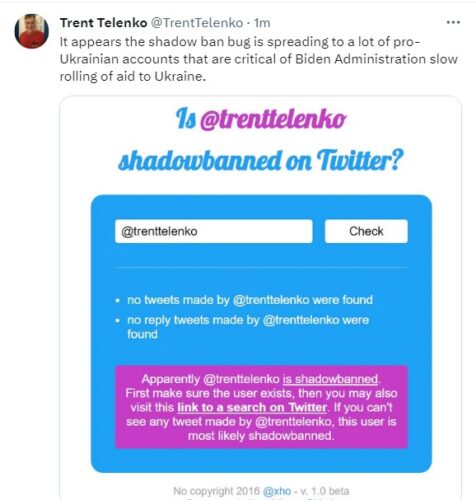So, looking at the actions of pro-Hamas demonstrators on university campuses and in the streets of major blue-tinged cities over the last few weeks, we really don’t have to ask as Dorothy Thompson did, in mid-1941 who goes Nazi? College students suckled on the sour teat of DIE-addled academicians with delusions of intellectual grandeur, for a certainty, and recent immigrants who have brought their unfortunate old habits of hate with them. Still, when it comes to that first group, it has been amazing and disheartening to observe that sheltered twentysomethings driven to hair-trigger meltdown by the alleged presence of misogyny, the faintest hint of racism, and microaggressions so tiny as to be invisible to the naked eye have enthusiastically aligned themselves with genocidal Jew haters from Gaza. Students and academics didn’t even pause for a split second, before cheering on indiscriminate random slaughter, torture, repeated rape so violent that it left pelvic bones broken, burning families alive in their own homes, looting and hostage-taking.
War and Peace
A Double-Edged Sword
Almost as horrifying as Hamas going all murderously Einsatzgruppen in Israel two weekends ago, is the realization that yes, indeed is the realization there are a not-inconsiderable number of Americans (and Americans-in-name-only) cheering them on. Cheering the remorseless slaughter of young and old alike, kidnapping for extortion and/or jollies, mutilation, torture, burning whole families and individuals alive, gang-rape … it’s a sobering spectacle. I expect any minute a rousing chorus of “Tomorrow Belongs To Me” from the Jew-hating undergrads and their professors on the campus too many colleges and universities.
I used to wonder how Germans under Adolph Hitler came around to accept, support, or at least turn a blind eye towards the so-called “Final Solution”, during the 1930s and ’40s. Well, wonder no more I’ve seen it play out now in real time. Corked up resentments, envy and pure unadulterated hatred, given voice in classrooms, newsrooms, in social media and from the pulpits of certain churches, spewing from so-called leaders of various communities … all spilling out, in the wake of October 7 … it’s as sick-making as reports of all the rejoicing in the Arab streets, and the comments about how we Americans had it coming, after 9-11. To try and focus on the horror and misery inflicted on the innocent and the self-justifying replies from the usual pro-Palestinians boils down to something like the rationale from an abusive spouse “Look at what you made me do!”
The New Pogrom
I think the reason that last Saturday’s massacre in Israel hits so close to the nerve of Americans like my daughter and I, is because we can look at the pictures and video of the victims and the aftermath and see ourselves. My daughter and I look at pictures of the blood-spattered crib and the baby carrier and see Wee Jamie. Hear him crying in pain and bewilderment. We see pictures of the pleasant little houses, the tree-planted neighborhoods targeted by the Hamas savages, and see our own neighborhood, as a bullet-riddled, blood-spattered smoking ruin. I look at pictures of the audience at the all-night music rave, and see my daughter among them, dancing with her friends and having fun, the next minute dragged away dead, or for treatment that used to be described as worse than death. My daughter can look at me or consider her memories of her bed-ridden invalid grandmother, and readily imagine either or both of us cut down mercilessly … and the murderers recording the whole bloody cruelty for posting to social media for the approval and cheers of their friends.
This is an organized and sponsored pogrom the cruelty and viciousness of which hasn’t been seen since medieval times, although the Nazis and Imperial Japanese certainly did their best in Europe and China within the memory of elderly people still alive today.
Foreign and Domestic
I do solemnly swear that I will support and defend the Constitution of the United States against all enemies, foreign and domestic… (From the Oath of Enlistment)
It honestly kind of slipped my mind at first, that Monday morning was the anniversary of the 9-11 terrorist attack on the United States. It’s been 22 years since that horrible day. I had other stuff purely personal concerns on my mind.
For one, every single thing that I had to say about 9-11, I said, wrote and posted ages ago … and why re-run, one more time? There’s just nothing more to say, any more than there would be anything more to say about the shock of the Pearl Harbor attack in 1941 one more tedious rerun of a recollection of where I was, what I was doing. It’s been a lifetime, in a way and for high-school and college graduates this year, it’s been all their lifetimes.
The other thing a more recent tragic anniversary which looms closer in time is the disastrous and humiliating withdrawal from Kabul, Afghanistan, and the Abbey Gate suicide bombing there which killed more than a hundred civilians and thirteen American service personnel. Those deaths meant so little to President Biden that he kept looking at his watch during the ceremony at Andrews AFB when their coffins were unloaded. Those thirteen were the merely last American military lives frittered away in almost two decades of seemingly endless and pointless deployments to Afghanistan, culminated in a departure so botched that I’m still shocked that only a single commissioned officer resigned in protest. Sec Def Austin and General “Thoroughly Modern” Milley apparently feel no shame over bungling their responsibility to the Nation so horribly.
What a “X” Platform Shadowban looks like
There has been a systematic effort by purportedly “Pro-Ukrainian” but Left/Democratic leaning X accounts to make support of Ukraine a Democrat versus Republican partisan political issue.
I am just one such account which has been targeted in what looks like “partisan battlefield preparation” for the 2024 election cycle.
